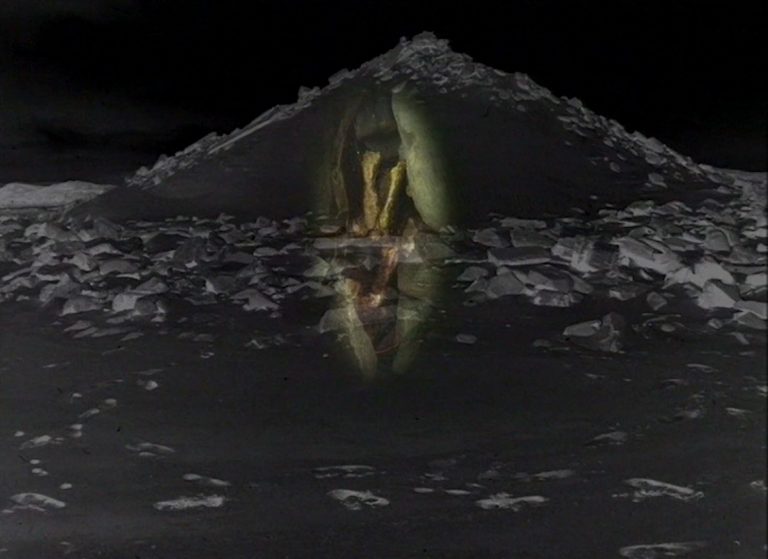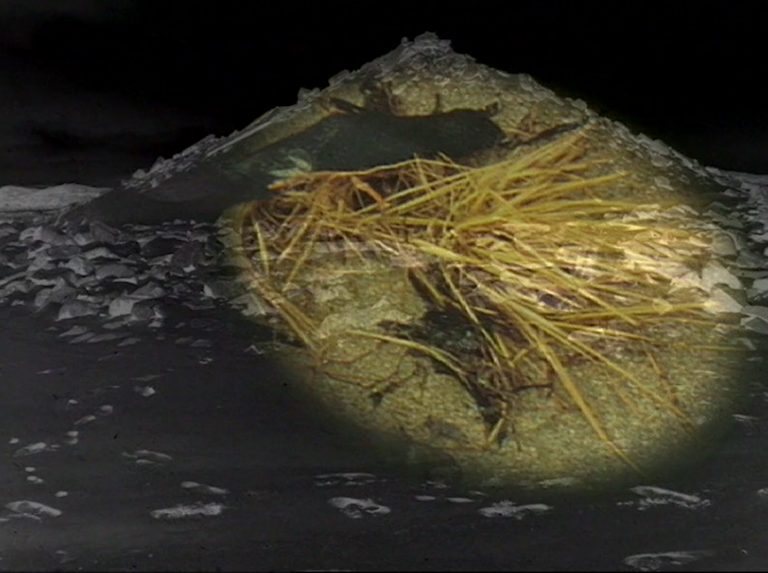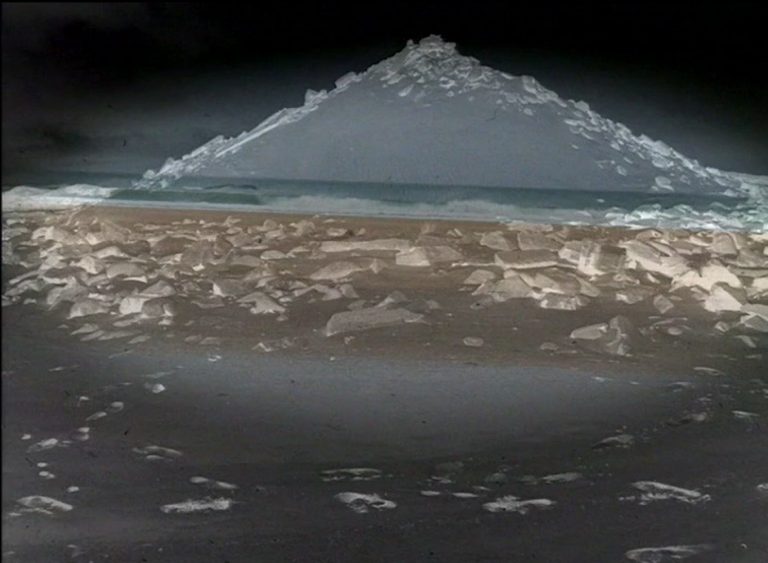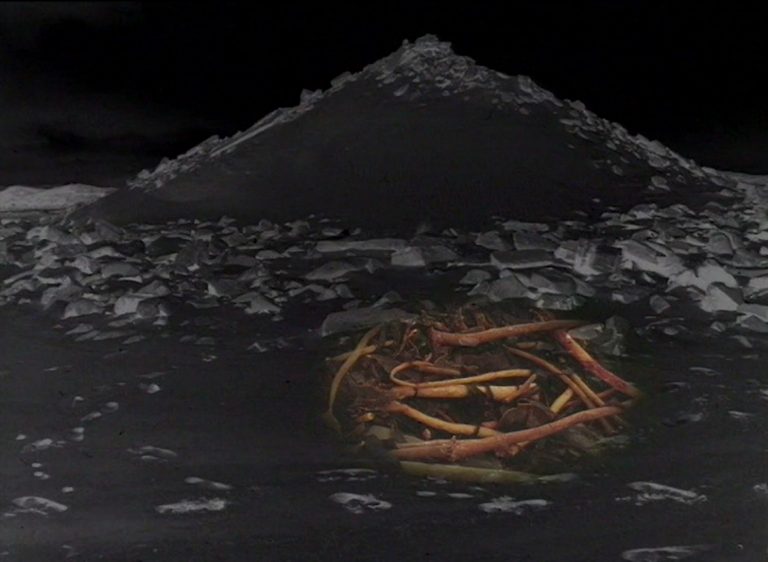IMMA Screen
IMMA Screen is an online screening series showcasing film and video works from the IMMA Collection. New screenings will be available monthly, presenting works by Irish and international artists alongside a new interview and related material from the IMMA Archive.
IMMA Screen is an online screening series showcasing artists’ films and videos from the IMMA Collection. New screenings will be available monthly, presenting works by Irish and international artists alongside a new interview and related material from the IMMA Archive. Each work will be accessible online for one month.
Artists’ moving image works have featured extensively in IMMA’s programming history since 1991 and form a key part of the Collection. Recently, many of these works have been digitised from analogue formats such as VHS tape and Laserdisc as part of a large-scale Collection & Programme Digitisation Project funded by the Department of Culture, Heritage & the Gaeltacht. This process preserves the works for the future while also allowing greater access to audiences and researchers. IMMA Screen highlights the Museum’s holdings of moving image work as a significant national collection of artists’ film and video.
The first programme for IMMA Screen presents works by six artists over six months. Including Helen Cammock, Phil Collins, Vivienne Dick, Kevin Gaffney, Isabel Nolan and Alanna O’Kelly.
Alanna O'Kelly, Sanctuary/Wastelands
We are delighted to present Alanna O’Kelly’s Sanctuary/Wastelands (1994) as the very first work from the Collection to be showcased as part of IMMA Screen. O’Kelly’s work had been a major feature of the exhibition IMMA Archive: 1990s, which was cut short on 12 March due to the COVID-19 closures. The IMMA Screen platform offers another opportunity to engage with the work remotely.
In addition to the video, the original soundtrack, which accompanied the 1994 slide-tape installation of Sanctuary/Wastelands, is available for the first time since the re-making of the work in 1998. A recent interview recorded by O’Kelly in her home is also available further down this page, as well as an earlier interview between O’Kelly and filmmaker Joe Lee from 1992 under the ‘Additional Resources’ section. Alongside these are a poem by the late Eavan Boland and a photograph taken by the artist showing the now disappeared burial mound at which the video was set. Printouts of both were presented alongside Sanctuary/Wastelands when it was first shown as part of the 1994 Glen Dimplex Artists Award exhibition.
Although the work itself takes the form of a video, Sanctuary/Wastelands is deeply connected to performance and the embodied cultural expression of grief. Made in 1994, Sanctuary/Wastelands captures a famine burial ground at Teampall Dumhach Mhór, or ‘Church of the Great Sandbank’ in Thallabhawn, County Mayo. This site was a monastic settlement from the 6th century and a famine burial ground in the 19th century. Known as ‘The Sanctuary’ to 17th century mapmakers, it was referred to as ‘The Wastelands’ by local people in the 19th and early 20th centuries. The work was conceived following a performance by O’Kelly at the site in which she circled the burial mound while keening for the dead. Once located on the edge of an estuary between Mweelrea Mountain and the Atlantic Ocean, the burial ground has now completely dissolved due to erosion.
Originally a slide-tape installation involving three projectors, Sanctuary/Wastelands was later digitised in 1998. The visuals remained the same, with the video capturing the 1994 set-up of one static image of the mound projected onto a wall overlaid with slowly revealed close-ups of the site from the two other projectors. However, a new audio track added in 1998 replaced the original. While the first track related specifically to the site in Mayo and featured the sound of the artist keening as she had done in her early performance there, the new version, made with musician Tommy Hayes, moved the focus away from the cultural specificities of Ireland. Catherine Marshall, former Head of Collections at IMMA, proposes that the artist’s intentions at the time were to relate the Irish context of famine, loss and mourning to similar, contemporary situations further afield; “The original slide-tape installation of Sanctuary/Wastelands (1994) focused attention on the failure of the Irish over 150 years to acknowledge the awfulness of the Great Famine and its impact on rural life and culture. In the later remake of this as a DVD installation (1998), O’Kelly introduced more overt references to other areas of the contemporary world that suffer famine now.”*
*Catherine Marshall, In Search of the Bigger Picture: The New Irish Art, 2007, pp 105-106
Original Soundtrack
Original Soundtrack
About the Artist
Irish artist Alanna O’Kelly (born 1955) attended the National College of Art and Design and the Slade School of Art, London. Her practice incorporates sculpture, performance, slide installation and film. Influenced by feminist politics, O’Kelly explores ideas of the psychic conflicts of our shared history and the continuity of tradition. O’Kelly’s work has featured in major group and solo exhibitions since the 1980s. She represented Ireland at the Sao Paulo Biennale in 1996.
Additional Information
Additional Information
IMMA Screen is an online screening series showcasing film and video works from the IMMA Collection. New screenings will be available monthly, presenting works by Irish and international artists alongside a new interview and related material from the IMMA Archive. Each work will be accessible online for one month.
The first programme for IMMA Screen presents works by six artists over six months. Including Helen Cammock, Phil Collins, Vivienne Dick, Kevin Gaffney, Isabel Nolan and Alanna O’Kelly.
In different ways, these works engage with performance and the role of the camera in the construction and mediation of identity. From Isabel Nolan’s humourous explorations of performed identity in Sloganeering 1-4 (2001), to Phil Collins’ confronting insight into the depiction of war victims by journalists in How to Make a Refugee (2000). In thinking about the psychological implications of newly imposed physical distancing between ourselves and others, the programme invites a timely reflection on the power and politics of representation and the continuous fabrications of the self and the other. A number of these works, including Sanctuary/Wastelands (1994) by Alanna O’Kelly, also deal poignantly with ideas of loss and erasure.




